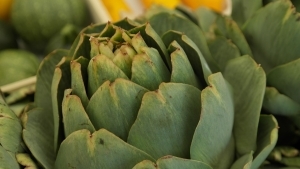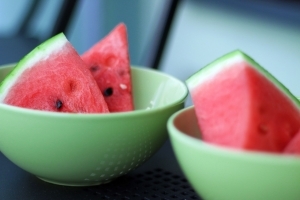Raw Fermented Sauerkraut

Photo: Supplied
1 large cabbage will make about 1-2 litres of sauerkraut
Ingredients:
- 1 large fresh cabbage*, including outer leaves
- 1-2 tablespoons non-iodised sea salt**
- 1 tablespoon caraway seeds (optional)
- 1-2 litre capacity flip-top (Fido) jars or mason jars - sterilised, or cleaned in very hot soapy water and rinsed well***
Method:
Peel off the darker outer leaves of the cabbage and set them aside for later.
Using a sharp knife, core the cabbage and shred it into very thin slices (about as thin as you can cut it easily).
You can also use a food processor with a shredding attachment if you have one.
Place shredded cabbage into a large clean bowl or very clean bucket (I use a flexi-tub).
Sprinkle amount of salt needed to get the 15gms salt/kg of cabbage. Add caraway seed if using.
Toss the salt through the cabbage for a minute or so and then leave it to sit for 30 minutes.
Allowing the salt to draw the liquid out of the cabbage means less work in pounding the cabbage.
Begin pounding the shredded cabbage with a blunt (French-style) rolling-pin or knead/massage it vigorously with your hands. It will take about 10 minutes to get the cabbage to release the juices.
Taste the cabbage and add more sea salt if you think it needs more, depending on the size of the cabbage used.
If there isn't much juice from the cabbage, continue to pound for a few more minutes.
The juice should come to the top of the cabbage when pressed down.
Place cabbage and juices into cool, clean jars leaving at least 5cm (2 inches) from the top of the jars.
This will allow the cabbage to expand during fermentation without the juice escaping.
Overfilling will cause the juice to escape and you will be left with dry sauerkraut that is not very pleasant to eat. It is worth the effort of cleaning and using more jars if necessary.
Rinse the outer reserved cabbage leaves and curl them up and place on top of the cabbage and juice and press down gently. Use as many leaves as you need to keep shredded cabbage below the juice once the lid is on.
Cover tightly and leave at room temperature out of direct sunlight for 3-14 days, depending on the temperature in your house.
I start opening one jar of my sauerkraut on day 3 to check the flavour and continue to check daily until I like the flavour. It should taste sour and a bit salty and sometimes fizzy.
Once it tastes ready store it in the fridge. It will keep for at least 6 months in the fridge, but we usually only get one or two weeks before ours is all gone!
If you see white mould growing, this is called kham yeast and is generally harmless and can be scraped off. But if you see blue, black or red mould you will need to discard the batch and start again.
Notes:
*Cabbage quality is key! A dry cabbage will produce a dry kraut. The best cabbages are dense, juicy cabbages. Also, if wanting to use red cabbage, it is best to do a 50/50 mix of green and red cabbage as the red cabbage tends to produce a soft kraut, while the green stays nice and crunchy.
**The ratio of salt is actually quite important and the general rule of thumb is to use approximately 15gm salt per kg of cabbage. This keeps the kraut crispy while not being overly salty. Marlborough sea salt or pink Himalayan sea salt work really well.
***Make sure your jar is made from a thick, sturdy glass as a surprising amount of pressure will build up inside of the jar during fermentation and we want to avoid an exploding jar! I have also used old jam and peanut butter jars when I have run out of bigger jars.


